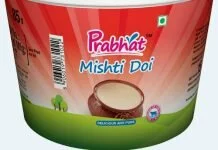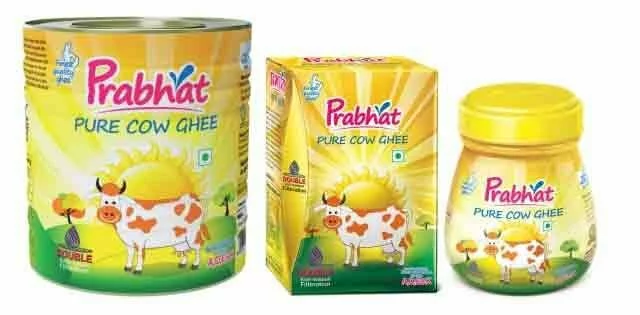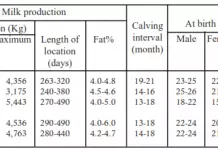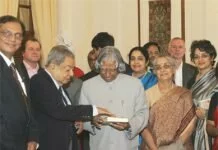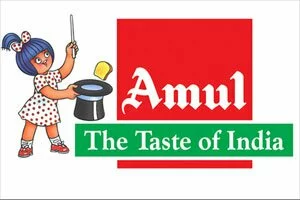Brand Of the Indus Civilization
At the outset, let me ask a few questions. Amul as a name:
- What does Amul mean to a milk producer? Hope?
- What does it mean to a rural household? Salvation from poverty?
- What does it means to an academician? A success story?
- A successful concept?What does it means to an Indian citizen?
- An Indian brand build by Indian for Indians and of Indians?
- Is it the soul of Indian agriculture? Or soul of the white revolution in India?
- Is it a source of inspiration for the poor and oppressed, that they too can create an Amul?What does it means for our leaders & bureaucrats?
- A heart-warming result of someone’s lifetime of work? Is it nation’s greatest success story under pinning our democracy?
- A school of democracy itself? Or a source of poverty eradication?
Amul is in essence – all of the above. You can only experience it and it is difficult to describe in words the effect of Amul and its ripples beyond the consumer world. It is not a brand. It has become a civilization of brands. It was not a brand building operation. It is a nation building exercise spanning seven decades and still on.
One of the small dimensions of Amul is advertising. A small dimension in reality, but vital.
Let me narrate my tryst with brand Amul
Dr. Kurien had a very beautiful way of addressing pressing issues. He would generally call a meeting of related teams from more than one organization under the umbrella, and sometimes, even invite academicians or outsiders to participate in the discussion of a pressing issue.
He would invariably have had his brief on the issue, which he would have gone through and may or may not be in full agreement with.
He would either open or let other concerned person open the discussion. As the discussion proceeds in one direction towards conclusion, he would adopt a counter position to test the conclusion. What are the repercussions? Are there other options? What will be the outcomes if we go down the other path? He would expect mid level young officers who are actually handling the subject be called into the meeting and encourage them to participate and present their views freely, even if he is disagreement with other seniors including himself. He would say, why not “doers” be asked and encouraged to participate to reach robust solutions?
I was lucky to have participated in many such meeting as young manager and observed him conduct his meetings deftly, shifting his position time & again, and receive alternate solutions – sometime diagonally opposite. What I liked most was his repeated insistence for “doers” to be present and be allowed to share their views.
Among others, Amul is perhaps the strongest brand India has built from scratch, post independence. As a 69 year old organization, it is loved ever more and each one of us are proud of it. It is the soul of white revolution of India and a source of great inspiration for every Indian businessman facing competition from multinational corporations.
Unlike many others Amul is the brand build by the poorest of this country and that very brand has protected them from exploitation and ensured fair returns. For an Indian family, Amul stands for best quality product at lowest possible price, a brand with which you begin your life and stays with you to keep you healthy, strong and joyful through different stages of life.
A question is often asked as to, how was Amul built so strong?
Answer is very simple. Practice highest core values firmly and consistently.
Best Quality. Total Quality. Quality in everything we do. Fair pricing. Being highly innovative. Stay open and transparent. Stay professional than most private and public sector outfits. Keep national interests above everything. Follow simple decision-making process. Ensure farmer’s interest is protected. Ensure Customer interest is held higher, as only then can one protect farmer’s interest. Be open to learning, experimentation, failures & improvements.
Focus on growth but with patience – solidly, firmly, and don’t be scared of failing!
With such a foundation, create and market best quality products at lowest possible prices in all segments.
Invariably advertise brand Amul for education of consumers, to keep them informed, impart knowledge of nutrition and quality, help them in usage and application of diversified products, share research knowledge and above all entertain them – realize what Amul is doing is not business but its a business of Nation Building.
Mission of Amul is that every Indian should live 100 years, healthy and strong. Therefore Amul does not spend billions on advertising but whatever we spend we spend consistently.
Brand Amul is a Sanskrit word meaning invaluable! Priceless!
Its style is unique and color red as we practice socialist philosophy. “Taste of India” slogan, which was added in 1991, is in green as we are basically an agribusiness. Together “Amul – The Taste of India” stands for taste of freedom, Taste of new, emerging, value driven civilization!
When Amul launched butter it used to advertise ‘Amul butter’ as pasteurized “makkhan”! Transport vans were painted, showing packet of Amul butter and statement ‘Pasteurized Makkhan’! Later a positioning statement ‘utterly butterly delicious’ was added and continues even today, after over 50 years. However it was a brilliant idea of Sylvester da Cunha who conceived the idea of deploying little polka-dot Amul butter girl on every packet and every communication. This was in late sixties.
He recommended that instead of advertising product butter in mundane ways – year after year, why not put a slogan once a week as though amul-butter girl is taking a position on important developments in the society – be it political, sports, cinema or any issues of consumers interest. Dr. Kurien gave absolute freedom for the campaign to choose the topic, subject, style, narration, in every respect. Not only would he not interfere, but made sure that no one else interfered in the campaign.
At Amul, we share data, knowledge, insights on consumer behavior, insights on competition, one is permitted to provide observations on the likes or dislikes in an ad, but one has to always respect the creative and its agency. They are given all the freedom to create and they are free to consider or reject these observations without any inhibition.
The result of this culture built by Dr. Kurien and firmly imbibed in all of us, is to respect the creativity and give them due freedom where they are the best.
The Amul Butter girl billboard campaign started in 1969 and has continued ever since. Initially it was limited to a few metros with only a few billboards. However as our distribution network expanded, the billboard numbers increased to about 100-125. To further improve the campaign reach it was extended to some of the leading newspapers. It very much was one of the first social media experiments that went viral!
With the advent of Internet, Amul butter topicals were hosted on the website and was completely in sync with the offline billboards so that customers near & far could access the much loved billboards from the comfort of their homes.
With this, it ensured digital distribution of this billboard campaign as early as 1995, when the rest of the world was waking up to the reality of internet.
Sometime in 1994, I met a young person who had just returned from US and had some very astute ideas about the influence of Internet. He prposed to develop a website for Amul when very few had even heard about Internet. But given our success and ambition, I felt it was the right choice. It took about a small fortune then to get it started, but I gave the go-ahead.
On 4th day he arrived into my office and said “ Mr. Vyas, your Amul website is up!”. I switched on my desktop and waited a fair few minutes for it to load. When the site came up, it was a good first attempt. Over the next few days it was refined further and Amul had presence on the Internet. And then, something happened which changed our outlook towards this new channel of reaching out to customers and vice-a-versa.
A few days later, one of my managers came to me with a printout of an email. We had received an enquiry from Switzerland, asking for a quote to supply 1100 metric tons of infant milk food. It wouldn’t surprise you when I say that we not only won that order but went beyond and supplied on a few large repeat orders.
Our decision to go online had paid for itself in no time.
The same person who made our website visited us again. Apart from the actual discussion around improving the site further, he mentioned that his attempts to create websites and online presence for other companies had not met with equal success. Another large foods company had placed an order with him, but only after going through a tedious procurement process. He could not resist asking me “ So Mr. Vyas, why did you place the order verbally without asking for written offer? Moreover you also paid immediately against my invoice? What made you decided so quickly?”
In my reply I told him that Sardar Patel had only once told Tribhovandas Patel, ‘Polson ne kadi muko’, which led to creation of Amul a Billion Dollar Food giant (http://www.amul.tv/amultv/viewfilmoncop.php?dvd=new). All it meant was – ‘Remove the middleman!’. How could I let go of an opportunity to do that once again. In my view, the Internet removed the ‘middleman’ and hence I was only doing what Sardar Patel had said in 1946! So why bother with the permission or a second thought!
Online presence leveraged Amul Girl and took our billboard to a global digital world. Emboldened by it, we also later started www.amul.tv where we stored all our digital production for consumer education and academic usage.
While most of us know Amul as a food company, the mandate is far bigger than just that. It is imperative that we don’t forget the roots of this company as we enter a new fast changing world. To that extent Amul has produced several movies and published books. We have produced a movie called “Manthan – The Churning” in 1974, directed by the legendary Shyam Benegal with a star cast of great Girish Karnad, Naseerudin Shah, Smita Patil. This movie was meant to be a reminder about the struggle and an icon of farmer’s leadership. A small 60-second clip from the movie, later converted into a TV commercial has become the essence of Amul, as known by millions of Indians. The movie was subtitled in more than 100 languages and is hosted on amul.tv even today.
“The Amul India Story”, is also documented and published as a story of White Revolution. Later Dr. Kurien also published his biography ‘I too had a dream’, which is also almost a story of the white revolution but a captivating narration as seen through his eyes!
Amul had published a baby book in 13 languages when amul baby food was launched in 1960s. The book educates parents how the child is concieved, delivered, grows up, its needs, pre and post-natal etc. Amul had even produced a full recipe book to educate cheese consumer what is possible with Amul Cheese.
Since 1994 Amul had developed and launched several new products such as whole range ice creams, Aseptic milk, Cream, Condensed Milk, Amul kool beverages and many more products were in pipeline. At the same time electronic media was proliferating rapidly and hundreds of TV channels, Magazines, Press, Radio and internet based media were all imminent.
Dr Kurien wanted to unify advertising effort under brand Amul and had been requesting our ad agencies to come up with unified approach! After years of debate Mr Kanon Krishnan of ASP, came up with a proposal and presented a campaign. He convinced us instantly to position Amul as Amul – The Taste Of India. The statement states Amul is a food brand and also is proudly swadeshi! Its red background signify our socialist philosophy and Green for Agriculture.
Similarly in 1997 we created a corporate ad using title song of Manthan ‘Maro Gao Kathawadi’ with appropriate modifications and deployed through electronic medium to connect with the consumer on social dimensions of our brand, which goes way beyond business. Today Amul has a great following on social media and huge number of young and old enjoy Amul bill board campaign and debate on them day in day out!
Amul has always believed in using communication medium in a creative and consistent manner to stay in the heart and soul of consumers. Its billboard campaign runs since over 50 years now and it has promoted much loved TV programs such as Amul Surabhi for almost a decade!
To strengthen our connection with the youth it has promoted programs like Star voice of India year after year for almost a decade now. The brand is now accessible to customers through over 6000 Amul shops, 75000 Amul ice cream outlets, 600 plus Amul sundae parlors etc.
In addition to the above, Amul sponsors and encourages education by offering vidyashree awards for top performers in about 20,000 schools across the country.
The purpose – to build new, prosperous and healthy India. Hope you all have a great day and that you find inspiration in every day life.
– B M Vyas
Mr. BM Vyas took-over as Managing Director of AMUL Co-Op. during expansion and opening up of the Indian economy & globalization in the 90s. In order to take on the competition, he championed Total Quality Management across the dairy value chain in Gujarat. Within a span of 16 years at helm of AMUL, he increased sales of AMUL to eight-folds (from Rs. 9.8 billion to Rs. 80 billion). He steered AMUL to be Asia’s largest fresh Milk processor or No. 1 Dairy Brand in India as well as in Asia Pacific, as per Media Magazine Survey, 2009. Under his leadership; AMUL launched innovative and special Dietary products like Probiotic & Sugar Free Ice Cream, Probiotic buttermilk for the first time in India.
Comments
comments


